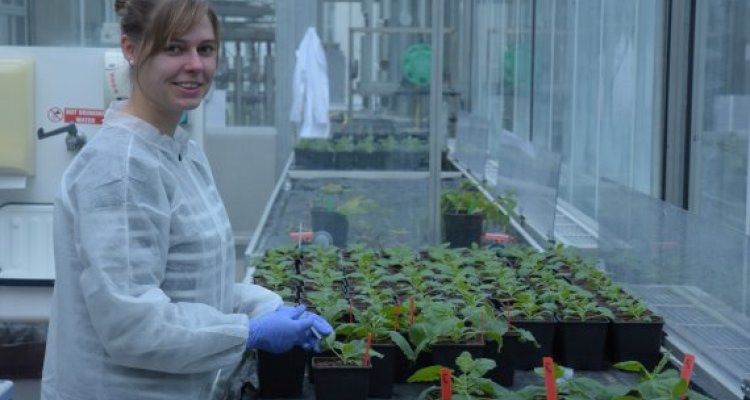
Nieuws
Making medicine from parasite proteins
Text: Albert Sikkema
Parasitic worms use specific proteins to infect us. PhD candidate Kim van Noort used tobacco plants to replicate these proteins. In doing so, she laid the foundation for a possible medicine for type-2 diabetes and, possibly, vaccines against worm infections.
Few people in the Netherlands know the Schistosoma worm, commonly known as blood-flukes. However, in tropical areas, this parasitic flat-worm infects some 250 million people each year and causes fever, coughing, muscle aches, nausea or diarrhoea. The old name of the disease it causes, bilharzia, is better known. When swimming in rivers and lakes, the larvae of this parasite can enter the body and settle in the arteries between bladder, liver or intestines. To date, there is no adequate medicine for the infection.
Sugar compounds
Kim van Noort studied the substances this worm excretes to infect our bodies and bypass our immune system. This characteristic may be applied to combat infectious diseases such as type-2 diabetes. The worm’s proteins have specific sugar compounds that she was eager to study, but the worms secrete very little of these proteins. The proteins can be cultivated by infecting hamsters, but this requires sacrificing a large number of these rodents. Thus, Van Noort decided to create the proteins using a tobacco plant.
Lego
Tobacco plants naturally produce proteins with complex sugars, but these are not the sugars she needed. Using genetic modification, Van Noort first ensured the protein had the correct structure, after which the right sugar compound was attached to the base protein. ‘It was like building with legos. I started by figuring out what basic blocks I needed. After that, I had to add the correct sugar structures in a certain sequence. By adding the correct enzymes to the tobacco plant, I was able to replicate the sugar compound that occurs on two of the worm’s proteins.’
Diabetes
However, the tobacco proteins are not yet identical to those in the worm, but one of the proteins is identified by our immune system and appears to have a beneficial effect on type-2 diabetes. This protein is now being tested in Leiden. If the test proves successful, this may yield a viable medicine for this common type of diabetes.
Now that Van Noort has developed a method to produce these sugar compounds on proteins, more possibilities arise. A colleague at the Nematology chair group is working on a vaccine against worm infections in cows. A colleague in Leiden is researching whether the proteins could be used in the treatment of allergies and asthma. Van Noort: ‘The key issue is that the proteins generate an effect in our immune system. What that effect is, depends on the type of protein. With the help of the tobacco plant, we can produce the required protein with the correct sugar compound. This may even enable us to make medicines and vaccines.’